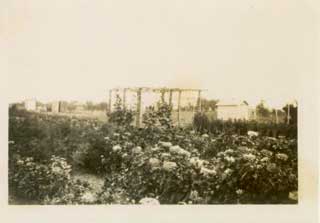Mary Joy Breton: We All Pitched In
When the Dean family lost their Minneapolis home during the Great Depression, the whole family pitched in to build a new life in rural Eden Prairie. Mary Joy Dean Breton remembered the hard work and perserverance, and the kindness of neighbors, needed to make a living from the family's one-acre truck farm in her story, Living Off The Land.
Story Excerpts
Starting a Farm
A generous friend, Mr. Lathrop, who owned a lumber yard in Minneapolis let us have enough lumber on credit to build a crude one-room, shoe-box shelter. But we had to pay cash to the contractor to construct it, as well as to the well driller. During construction we slept in a rented house in Bloomington where we had spent the winter of 1932-33. By day we worked on clearing the weeds and oats from our acre in preparation for planting vegetables. Even after plowing and harrowing the ground and pulling out the oats, the grain kept coming back up…raising vegetables meant food for the coming winter. So all of us had to pitch in and continue working. The soil was sticky clay, though, and difficult to cultivate. Worse yet, we were inexperienced gardeners. Of the two thousand strawberry plants my mother set out, only five hundred survived the dry spring. Until the well was dug, we had to haul water in milk cans from a neighbor to water what we had planted.
My mother and I created a bed of annual flowers—mostly zinnias—in one area. I squatted beside her as she dropped seeds into the soil channel we had hoed. "We'll sell fresh cut flowers along the highway. They will be our cash crop." Kind neighbors who had started a nursery business gave us poplar tree seedlings and a few small shrubs including roses—my father's favorite flower. His father had been a gardener on a "gentleman's estate" in his native Cornwall, England.
We worked to enrich and aerate the clay soil on our Eden Prairie acre by adding manure given to us by neighboring farmers. We also hauled peat from the bog in an adjacent valley. We buried our organic kitchen garbage between our vegetable crop rows and maintained a compost pile. During the summers when my mother had to work in the garden, much of the housework and cooking fell to me, the only girl. We cooked on a three-burner kerosene stove using a portable metal oven over one burner when we wished to bake.
Growing and Preserving our Own Food
During harvest time in the late summer, an oblong copper boiler covering two burners of the kerosene stove bubbled away 24 hours a day while my mother—often staying up all night—canned the tomatoes, corn, beans and other vegetables we had raised along with apples and peaches contributed by generous neighbors. We stored potatoes, squash, carrots and cabbages in our earthen cellar under the house. One onion farmer gave us all we could harvest ourselves. Another sold us all the asparagus we could cut for fifty cents a bushel. We bought and carried home raw milk in gallon buckets straight from the Holstein cows on a neighboring dairy farm.



Source
Breton, Mary Joy, Living Off The Land. Minnesota Historical Society: Share Your Story, 2006.


